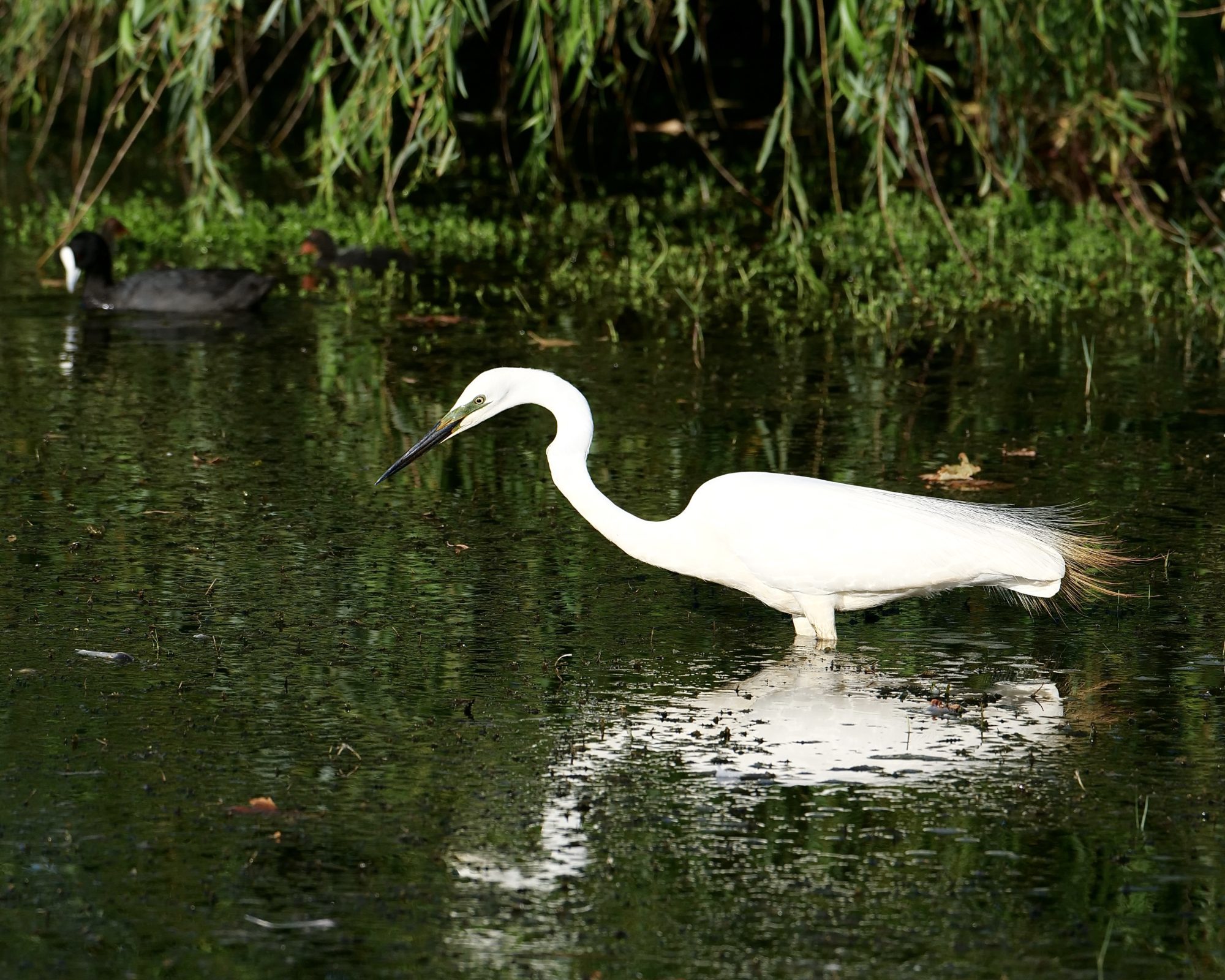Not every predatory stalker relies on cover and/or camouflage.
Today’s very elegant hunter is easily seen, even by inattentive humans.
A Great Egret relies on stillness and focus…and the very sudden deployment of his/her neck, head and beak.
An egret’s “lethal end” is analogous to a speargun.
Egrets are a subset of herons.
The Great Egret is the largest, lankiest egret.
Ardea alba lives on every continent, bar Antarctica.
Wherever fresh or brackish water is wadable, it hunts fish, crustaceans and amphibians.
Solitary as hunters, egrets are communal breeders.
The Great Egret is generally considered a single species, with several subspecies.
Some, however, regard Ardea alba’s Australian variant as a separate species and label it as the Eastern Great Egret, Ardea modesta.
Click here for information about Great Egrets, worldwide.
Click this for information about the Australian variant and its (surprisingly variable, allegedly) conservation status.
Photo is copyright Doug Spencer, taken on southeastern side of Lake Monger at 5.53 pm on New Year’s Day.
Its other waterbird is one also familiar to most Australians – the Eurasian Coot.
Tomorrow’s post features the latter bird’s startlingly stark chick.
To put it mildly, it does not look just like mum…or dad.

Hi Doug
Lake Monger seems like quite a busy place for birds.